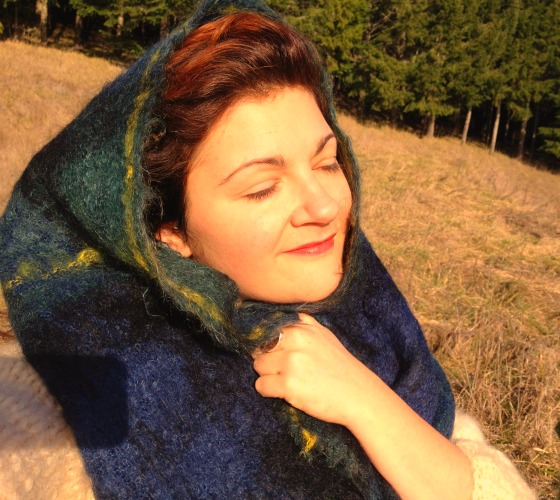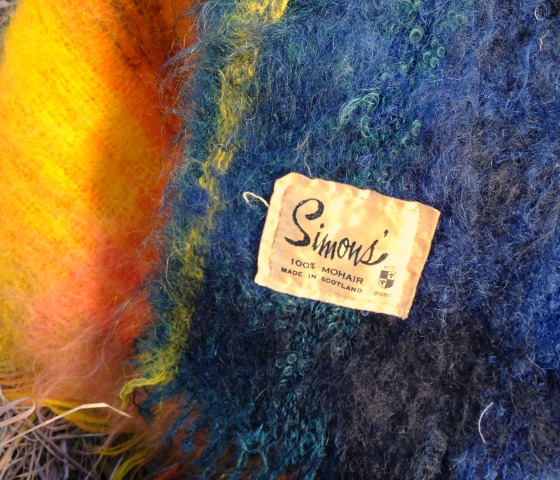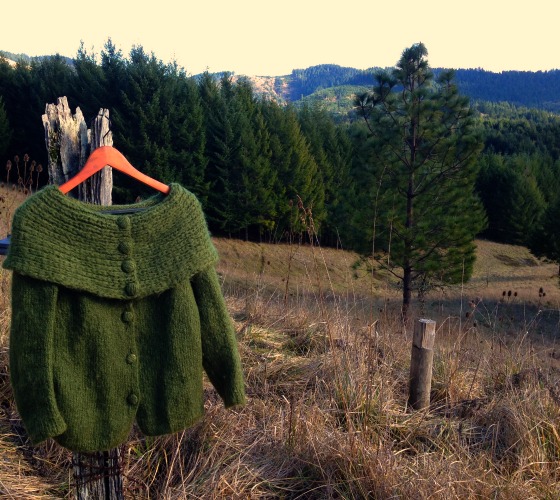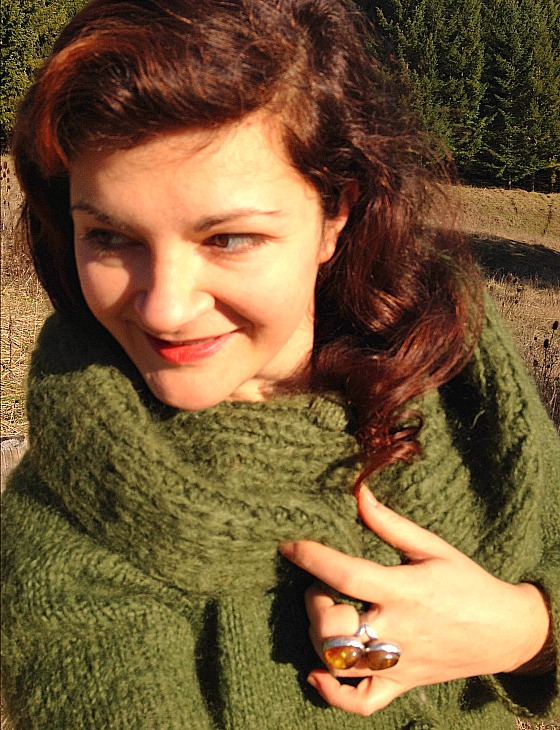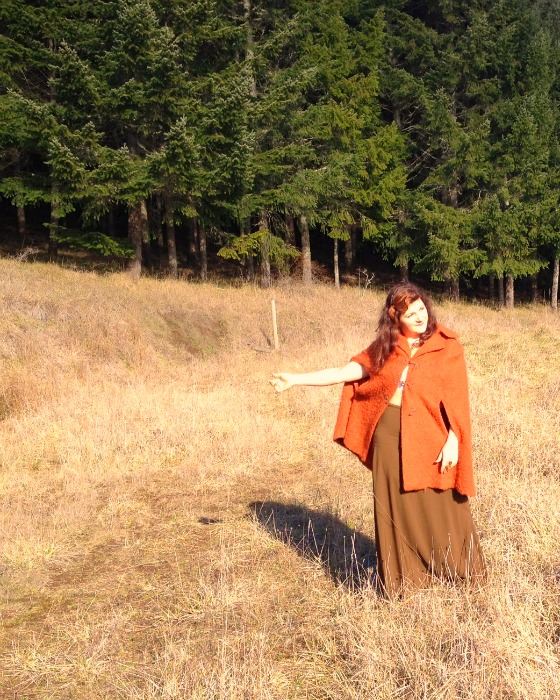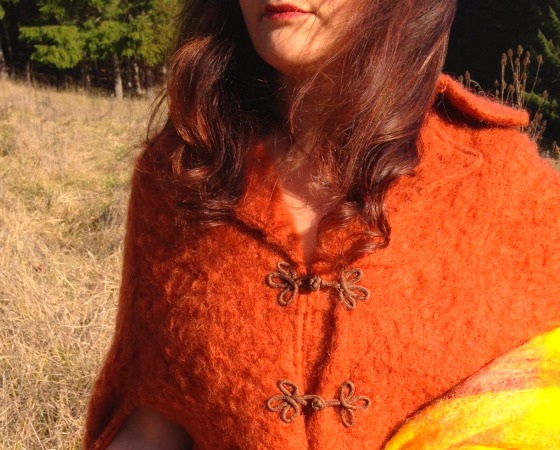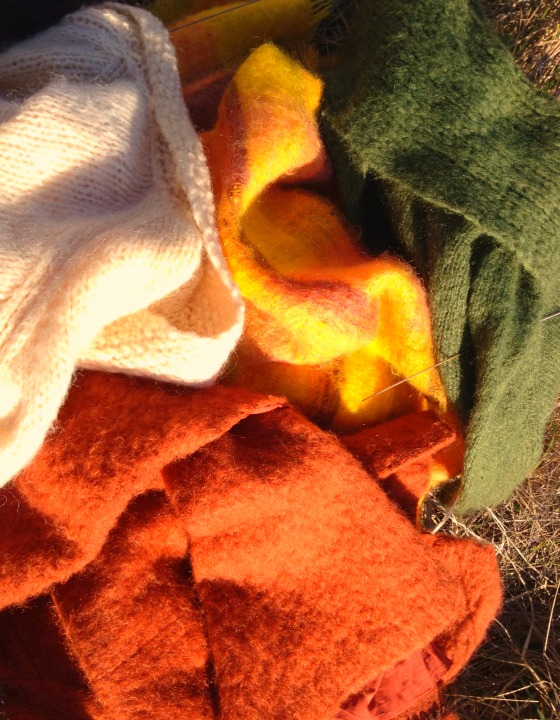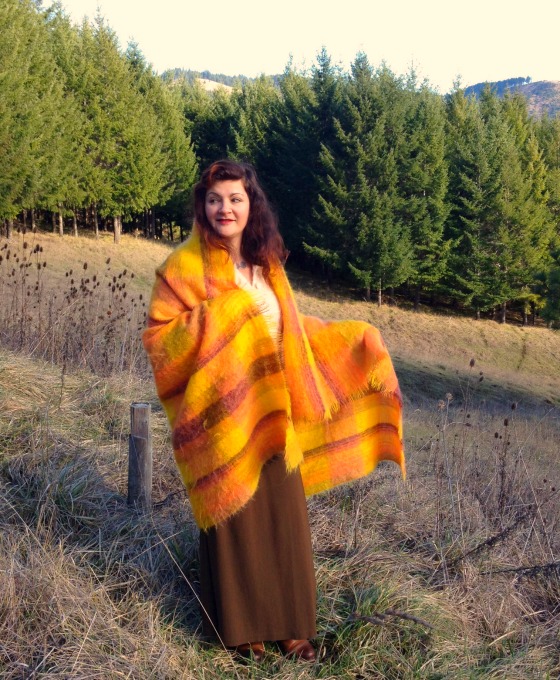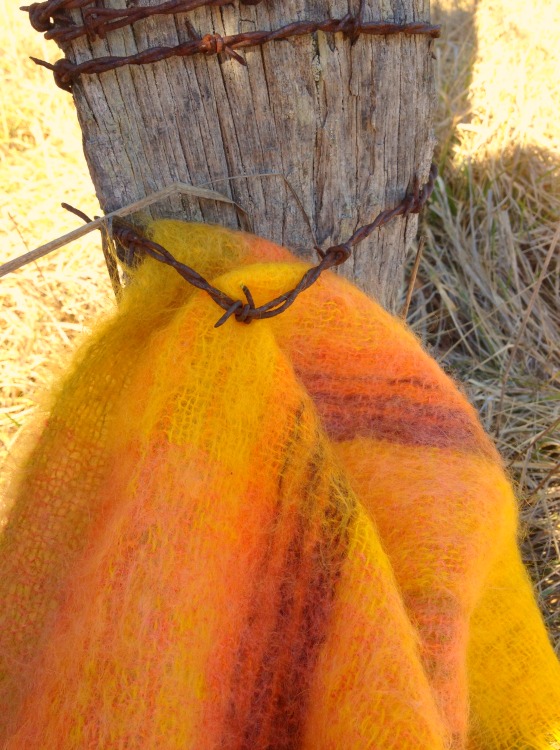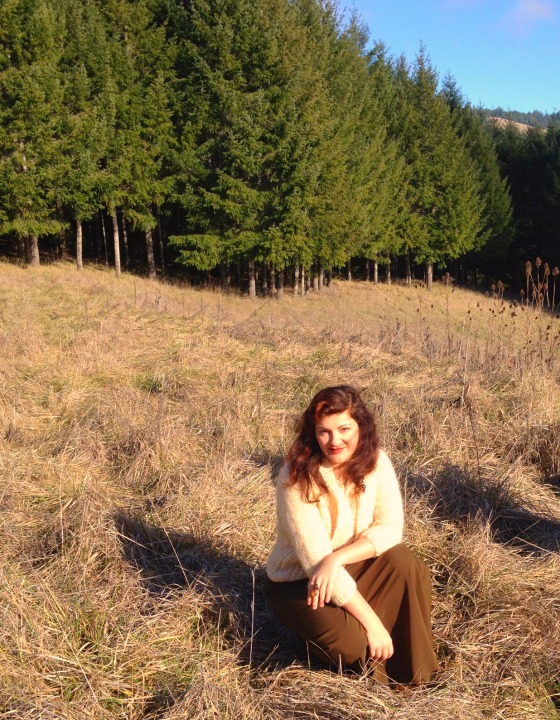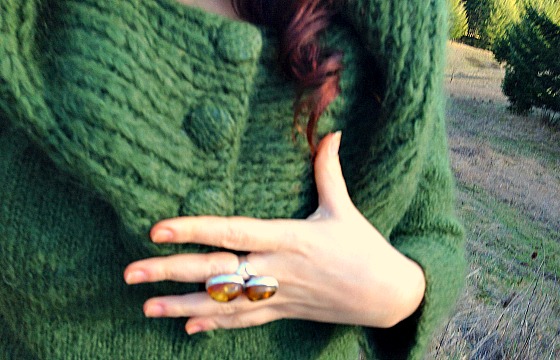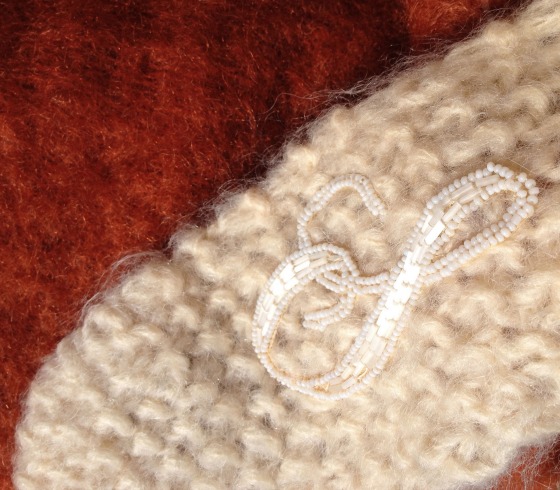
Vintage Mohair: A Love Story with a Luxe Fabric
The first piece of mohair I owned is my grandmother’s scarf, (above and below). I inherited it from her when she passed away, and for many years it smelled faintly of the particular scent of her always-warm skin and Joy perfume. She wore it all winter long, every winter that I can remember—as have I, for the past 5 years. It’s at least 40 years old, if not more, and has held its shape perfectly.
So began my love affair with a fabric that I find endlessly lovely. Mohair, as you can see from the close-up above, is an intensely fuzzy fabric when knitted, though due to its long fibers, isn’t irritating to the skin (at least, not mine) and never over-fuzzes. Mohair comes from Angora goats, with the largest producers in the US being in the Texas Hill Country, and the South Africa producing about 50% of the world’s supply.
I guess my grandmother must have liked Mohair too, because I also inherited the incredible green sweater with a giant collar (above and below). I wear it with the collar scrunched up (it was designed to be a sort-of boat-neck-collared garment); sometimes I rearrange the buttons so that the collar part overlaps on itself. Mohair can’t help but feel luxurious when you wear it, and is regarded as a luxury fabric (along with more familiar ones like angora and cashmere). However, you can find vintage mohair very inexpensively.
Mohair is incredibly warm in cold weather; its naturally insulating, and I use my sweater as a coat and am comfortable in Oregon winter temperatures (40s and 50s) with just a long-sleeve shirt underneath. It’s also quite breathable and moisture-wicking when it warms up; I don’t often get overheated wearing mohair like I do with wool sweaters, putting them on when chilly and taking them off when I warm up, an endless back-and-forth.
I spotted this mohair cape from across the store—which was a Salvation Army in Syracuse, New York. At the time, my friend Rebecca got to it first, and nabbed it. The rules were that whoever got to an item first bought it, and she held onto it for years, but rarely wore it. About 5 years later, when we were in our mid-20s, Rebecca gifted the cape to me, knowing that I would get more use out of it than she would. She was right! It is one of my signature pieces; besides the glorious dusky orange color, I adore its special toggle-style closures (below). I’ve been wearing it for a decade.
Mohair takes dyes incredibly well, so you can achieve glorious, bright colors (that last forever; each of the pieces above is 30-40 years old). This aspect of mohair is important to me, as I love wearing color and pattern as much as possible.
An example of the beautiful colors mohair can display. The luster of mohair is hard to see in these pictures, but it really reflects light well, adding to the prettiness and intensity of the color it is dyed.
It was just this winter that I realized that mohair is something that my all-time favorite pieces of clothing have in common, and because they are so incredibly long-lasting, I decided to invest in some additional mohair this year—which I anticipate wearing into my dotage! I found this stunningly sunny and intensely colored blanket on eBay when searching “vintage mohair” (there’s a lot of new mohair out of China and it all looks pretty bad, unfortunately).
I actually have this blanket on my lap as I write this post, and if anything, the colors are even brighter and more saturated than what you see here. The eBay seller indicated that this blanket was from the 70s. From what I can tell, most of the best mohair out there is from post WW2-1970s.
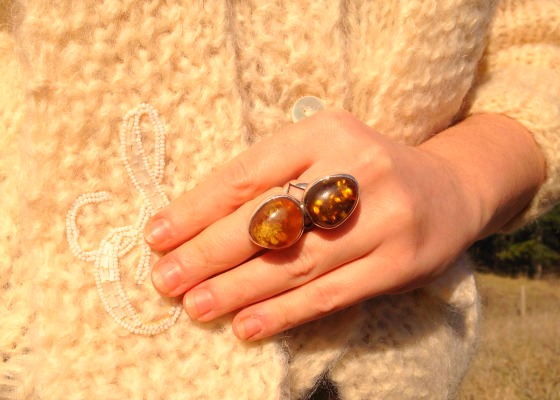
My next purchase, via Reverie Vintage on Etsy, was this 50s-era sweater (above and below) in a most deliciously creamy mohair. I had to have it because, as you can see, there is a script “S” on the ties that hang down the front; what a bit of luck to find an incredible mohair piece with my own initial on it!
Mohair is one of the oldest fabrics in existence, and not only is it durable, it’s fire-resistant, naturally stretchy, crease-resistant (it travels great), I’ve also found it doesn’t absorb smells easily; especially anything airborne, though I do dab small amounts of essential oils on the blanket, so it smells of lavender! Please note that due to the structure of the goat hair, mohair doesn’t felt like wool does.
Some fun mohair history, from Wikipedia:
The Angora goat is thought to originate from the mountains of Tibet, making their way to Turkey in the 16th century. However, fabric made of mohair was known in England as early as the 8th century. In about 1820, raw mohair was first exported from Turkey to England, which then became the leading manufacturer of mohair products. The Yorkshire mills spun yarn that was exported to Russia, Germany, Austria, etc., as well as woven directly in Yorkshire.
Until 1849, the Turkish province of Ankara was the sole producer of Angora goats. Charles V is believed to be the first to bring Angora goats to Europe. Due to the great demand for mohair fiber, throughout the 1800s there was a great deal of crossbreeding between Angora goats and common goats. The growing demand for mohair further resulted in attempts on a commercial scale to introduce the goat into South Africa (where it was crossed with the native goat) in 1838, the United States in 1849, Australia from 1856–1875, and later stillNew Zealand. In 1849, Angora goats made their way to America as a gift from Turkey.
Related on Eco-Chick:
Subtle Style: 5 Quietly Detailed Sustainable Sweaters
Myrrhia: Zero-Waste, Sustainable Knitwear with a Modern Take


